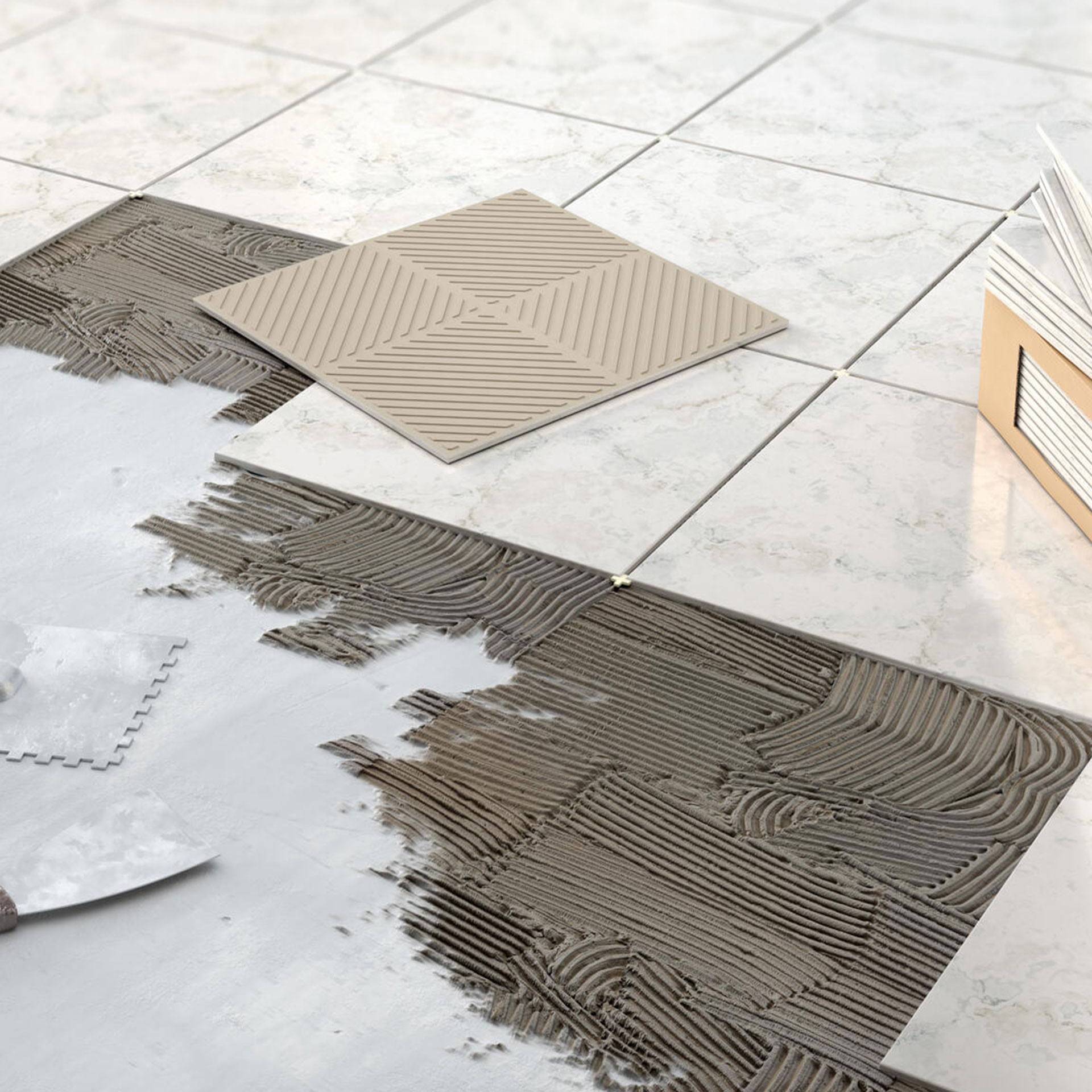When embarking on a tiling project, it’s crucial to ensure you have the right amount of tile adhesive at your disposal. However, determining the exact quantity can sometimes feel like searching for a needle in a haystack. But fear not, as we unravel the mystery of ‘How Much Tile Adhesive Do You Need,’ guiding you through the intricacies of calculations and considerations that can make or break your tile installation. Also Read Manufacturers of Tile Adhesive, Wall Putty & Epoxy Grout
Factors Influencing Adhesive Quantity
- To determine the amount of tile adhesive needed, consider the surface area of the area to be tiled and the recommended coverage per square foot. Before applying the adhesive, ensure that the moisture levels in the area are appropriate. Excessive moisture can affect the adhesive’s ability to bond properly.
- Proper surface preparation is crucial for a successful tiling project. Make sure the surface is clean, dry, and free of any debris that could hinder the adhesive’s bond. Moisture levels play a significant role in the effectiveness of the adhesive. High moisture levels can lead to adhesive failure, causing tiles to come loose over time. It’s essential to test the moisture levels of the substrate before applying the adhesive to prevent any future issues.
- Surface preparation is key to the longevity of your tiled surface. Inadequate preparation can result in tiles shifting or popping off. Taking the time to properly clean and dry the surface will ensure a strong bond between the adhesive and the tiles, providing a durable and long-lasting finish.

Calculating Adhesive Amount
- Considering the factors that influence adhesive quantity, accurately calculating the amount of tile adhesive needed is essential for a successful tiling project. To calculate the adhesive amount required, begin by determining the total square footage of the area to be tiled.
- Next, refer to the manufacturer’s guidelines on the adhesive packaging, as they often provide coverage information based on the type of tile being used. Adhesive application techniques play a crucial role in determining the quantity needed. For example, back-buttering tiles or using a notched trowel can increase adhesive usage.
- It’s also important to consider the environmental impact of adhesive use. Opt for low volatile organic compound (VOC) adhesives to minimize harmful emissions. By calculating the adhesive amount accurately, you not only ensure the success of your tiling project but also contribute to reducing the environmental footprint of your endeavor.
Tile Size Considerations
- When selecting tile sizes for your project, take into account the overall design and layout to ensure a cohesive and visually appealing result. Consider the size of the space you’re tiling and whether you want to create a sense of openness or add a more intricate design element. Larger tiles can make a small room appear more spacious, while smaller tiles can allow for more intricate patterns and designs.
- Grout color choices play a crucial role in enhancing the overall look of your tiled area. Light-colored grout can create a seamless and clean appearance, while darker grout can add contrast and highlight the individual tiles. Matching the grout color to the tile color creates a continuous look, while choosing a contrasting grout color can make the tiles pop and create a more dramatic effect.
- Pattern options also come into play when selecting tile sizes. Larger tiles are often used in a straight lay pattern for a modern and clean look, while smaller tiles can be arranged in herringbone or basketweave patterns for a more intricate and decorative finish. Consider the style you want to achieve and how different tile sizes can enhance the overall aesthetic of your space.
Coverage per Adhesive Type
- For optimal results in your tiling project, assess the coverage provided by each type of adhesive to determine the quantity needed. Understanding the coverage per adhesive type is crucial for a successful tile installation. Different adhesives have varying mixing ratios and application techniques that directly impact their coverage capabilities.
- Mixing ratios play a significant role in determining the coverage of tile adhesive. Some adhesives require a specific ratio of adhesive to water or additive to achieve the desired consistency for proper adhesion. It’s essential to follow the manufacturer’s instructions carefully to ensure the adhesive performs as intended and covers the specified area.
- Additionally, application techniques can affect the coverage of tile adhesive. Proper trowel selection and the angle at which the adhesive is applied can impact how much adhesive is used per square foot. By using the correct trowel size and applying the adhesive in a consistent manner, you can maximize coverage and minimize waste. Mastering the appropriate mixing ratios and application techniques for your chosen adhesive type will help you determine the precise quantity needed for your tiling project.
Tips for Minimizing Waste
- To minimize waste when working with tile adhesive, carefully plan your tiling layout to optimize adhesive usage efficiency. Start by measuring the area you need to tile accurately. This step is crucial in determining the amount of adhesive required. Use the coverage per adhesive type information to calculate the right quantity without excess. When laying out your tiles, consider dry-fitting them first to ensure they fit correctly and make any necessary adjustments before applying the adhesive.
- When applying the adhesive, use the appropriate trowel size recommended by the manufacturer. This ensures an efficient application that covers the necessary surface area without excess adhesive being squeezed out when pressing the tiles into place. Work in small sections to prevent the adhesive from drying out before you can lay the tiles. Additionally, wipe off any excess adhesive that seeps through the tile joints immediately to avoid a messy finish and to reduce waste.
Conclusion
You now have all the information you need to accurately calculate how much tile adhesive you’ll need for your project. By considering factors such as tile size, coverage per adhesive type, and tips for minimizing waste, you can ensure you purchase the right amount of adhesive for the job. Remember to double check your calculations and always have a little extra on hand, just in case.
Happy tiling!


